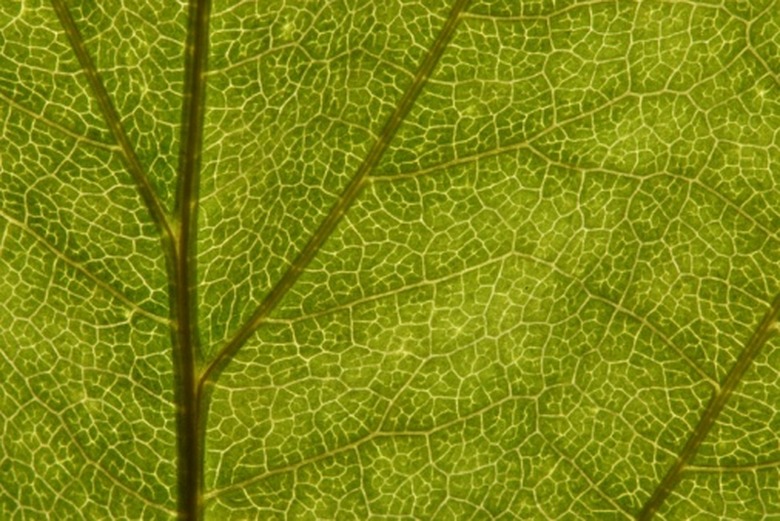Ideal Conditions For Photosynthesis
What helps plants with photosynthesis? Photosynthesis is the process that plants use to make their own food. With energy from the sun, plants and other autotrophs convert water and carbon dioxide into glucose and oxygen.
So, plants need water, carbon dioxide and sunlight to photosynthesize, but what are the ideal conditions for photosynthesis? A plant is provided with ideal conditions for photosynthesis when it has an adequate supply of water, carbon dioxide and sunlight – but like most things in life, it is possible for plants to have too much of a good thing, such as sunlight. Also, factors such as temperature affect the ways that plants function, and thus impact ideal conditions for photosynthesis.
The Process of Photosynthesis
The Process of Photosynthesis
A plant is provided with ideal conditions for photosynthesis when it has just the right amounts of the things it needs: water, carbon dioxide and sunlight. Like the character Goldilocks in the classic fairy tale, plants are happiest when they are provided with not too much and not too little of these inputs.
Too little water, carbon dioxide or sunlight can be a limiting factor for photosynthesis, causing photosynthesis in plants to slow down or even stop. On the other hand, excessive light, water or temperatures can damage fragile plant leaves, resulting in wilting or even necrosis, which is the death of plant cells.
The process of photosynthesis occurs in the chloroplasts of plant cells. Chlorophyll, a green pigment that is essential for photosynthesis, absorbs sunlight and converts it into energy. Plants use this energy to create glucose, or food, to make new cells and repair old ones.
Photosynthesis and Respiration
Photosynthesis and Respiration
Just as animals eat and breathe, plants photosynthesize and respire. Respiration is a process that is essentially the opposite of photosynthesis; it burns the food created by photosynthesis to fuel plant growth.
Photosynthesis occurs in most plants only during the day, while respiration happens at both day and night. Farmers seeking the ideal conditions for photosynthesis to maximize crop yields must find the perfect balance between photosynthesis and respiration, which is impacted by a variety of factors that interact with each other.
Impact of Light on Photosynthesis
Impact of Light on Photosynthesis
Light is one of the most important things that influence photosynthesis. Too little light can be a limiting factor, and light of different colors can also slow down photosynthesis.
Chlorophyll, the pigment involved in photosynthesis, can only absorb certain wavelengths of light. Wavelengths of light that are 400 to 700 nanometers – red and blue light – can be used for photosynthesis; this often means that supplemental light must be used in greenhouses.
The quantity of light also impacts the rate of photosynthesis. A plant is provided with ideal conditions for photosynthesis when it receives 12 to 16 hours of light a day; however, this is a general figure, and some plant species will need more or fewer hours of sunlight to grow and flower.
Water and Carbon Dioxide
Water and Carbon Dioxide
Water and carbon dioxide are essential ingredients for the process of photosynthesis. Photosynthesis is limited when plants experience drought conditions, but too much water can be a problem too. The ideal amount of water depends on the plant species as some varieties, like cattails, prefer to grow in mucky soils, while others, like cactuses, thrive in arid soils.
Carbon dioxide is also required for the process of photosynthesis. In outdoor environments, concentrations of carbon dioxide today are about 400 ppm; plants can grow at carbon dioxide levels up to 800-1,000 ppm, so greenhouse growers often provide supplemental carbon dioxide to increase plant growth.
How Temperature Affects Photosynthesis
How Temperature Affects Photosynthesis
Temperature plays an important role in photosynthesis, and it interacts with many of the other factors impacting this essential process in plants. The ideal temperature for photosynthesis depends on the concentration of carbon dioxide available in the environment.
Higher temperatures increase the rate of photosynthesis to a point, but they also increase the rate of respiration in plants. The rate of transpiration, or loss of water through plant leaves, also increases with higher temperatures, which in turn affects the ideal amount of water for photosynthesis.
Cite This Article
MLA
Sloane, Christina. "Ideal Conditions For Photosynthesis" sciencing.com, https://www.sciencing.com/ideal-conditions-for-photosynthesis-13428178/. 1 December 2021.
APA
Sloane, Christina. (2021, December 1). Ideal Conditions For Photosynthesis. sciencing.com. Retrieved from https://www.sciencing.com/ideal-conditions-for-photosynthesis-13428178/
Chicago
Sloane, Christina. Ideal Conditions For Photosynthesis last modified March 24, 2022. https://www.sciencing.com/ideal-conditions-for-photosynthesis-13428178/
